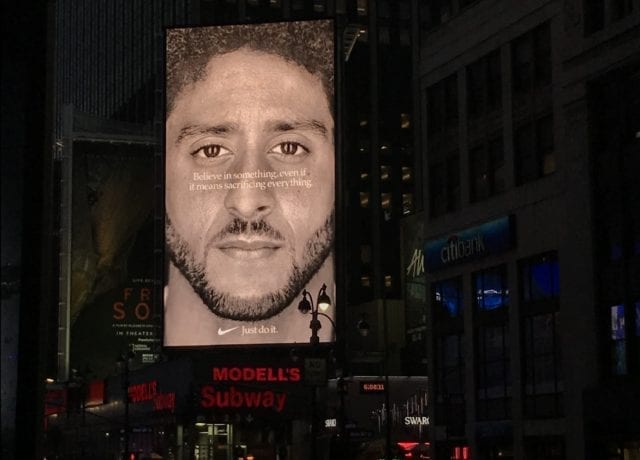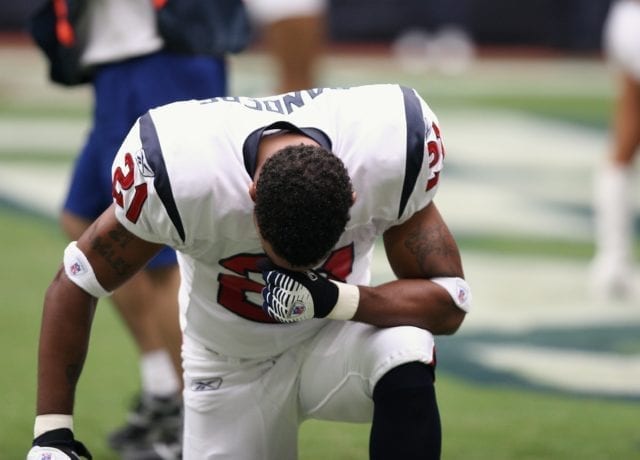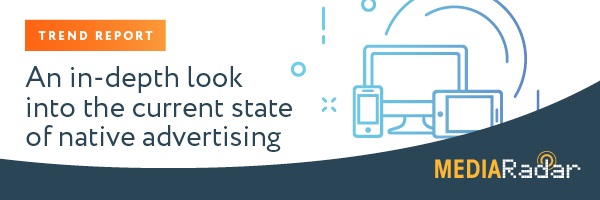In our September 2018 agency roundup, we highlighted arguably the most controversial native ad campaign to date: Nike’s 30th “Just Do It” native campaign with Colin Kaepernick, the famous protester and former National Football League (NFL) quarterback. Kaepernick first stirred up controversy by sitting, then kneeling, during the 2016 national anthem in protest of racial injustice in the U.S.
Nike’s Native Ad Sparked Protests
The native ad, created by Wieden + Kennedy, ran across four different TV networks for five days from September 13th, 2018 to September 17th, 2018. It fostered outrage from certain conservatives. To boycott, some customers burned their own Nike shoes, just one day after the native ad first ran, as shown below.
But, Nike’s Native Ad with Colin Kaepernick Also Garnered Praise
Nike’s native ad campaign has been commended by creative leaders in the advertising industry, so expect to see it on the awards circuit. The native campaign also received backing in other ways.
- It was supported by two full-page buys in the Chicago Tribune and The New York Times. While the newspapers didn’t specifically show the NFL star himself, they did use Nike’s slogan, “Believe in something even if it means sacrificing everything.”
- It was supported across nine different Snapchat channels from September 7th, 2018 until September 27th, 2018.
- It got out-of-home (OOH) advertising support. For example, Nike’s native ad was posted on a billboard right near Pennsylvania Station in New York City. Here is an image of it from October 22nd around 6pm EST.

While Edison Trends indicated “an initial dip, Nike’s online sales surged 31% after the announcement.” The native ad also received 26.7 million views on YouTube. Plus, following the native campaign’s initial launch, the big global brand, Nike, created better social engagement, according to a September 11th article that outlined the best digital marketing stats from that week. Nike’s Facebook, Instagram, and Twitter activity increased and its follower count grew.
What Makes a Successful Native Campaign? How Was Nike’s Native Campaign So Effective?
The average renewal rate is 33% for native ad campaigns that run for less than six months. But, news outlets, such as The Wall Street Journal, Financial Times, or the New York Medicine Journal, for instance, have renewal rates of 72%. The key difference here is the length of the campaigns. In the words of MediaRadar CEO, Todd Krizelman, “One of the things the successful publishers all have in common is the duration of the campaign. What we observed is in that time period of six months, the publisher has more time to course correct,” meaning that publishers have the ability to tweak creative and put more time in to meet a client’s need. Nike’s native ad campaign, which began early last month, is still running, putting it on the right track to generating a higher renewal rate.
Challenges with Native Advertising
There are drawbacks to native advertising, however. Campaigns can be expensive. For a six-month run, brands might have to pay up to $450,000, or $75,000 per month, for running sponsored content on a top tier publication’s website. Despite the expense, the total number of native advertisers stagnating, and its overall growth slowing recently, native advertising is still successful. The return rate on investment is still much higher than the industry norm. It also has other benefits.
Benefits of Native Advertising
Not only do two out of three GenZ, Millennials, and GenX consumers trust branded content more than traditional advertising, but they also engage with it more because they find it interesting. And, according to a Reuters survey, 75% of consumers say that, if content peaks their interest, then they will engage with it. Native display ads also receive a higher click-through-rate (CTR) than typical display ads – 8.8X higher to be exact. Finally, native advertising actually drives Millennial consumers to make purchases. 1/3 of these Millennials say that they’ve bought something as a result of a sponsored post.
Conclusion
Nike changed the game. By stirring controversy, it bred success. By implementing native advertising, it gathered benefits. It’s important for advertisers to identify opportunities with native in 2018. They should focus on finding more unique ways to produce native ads that will make them stand out from their competition.




